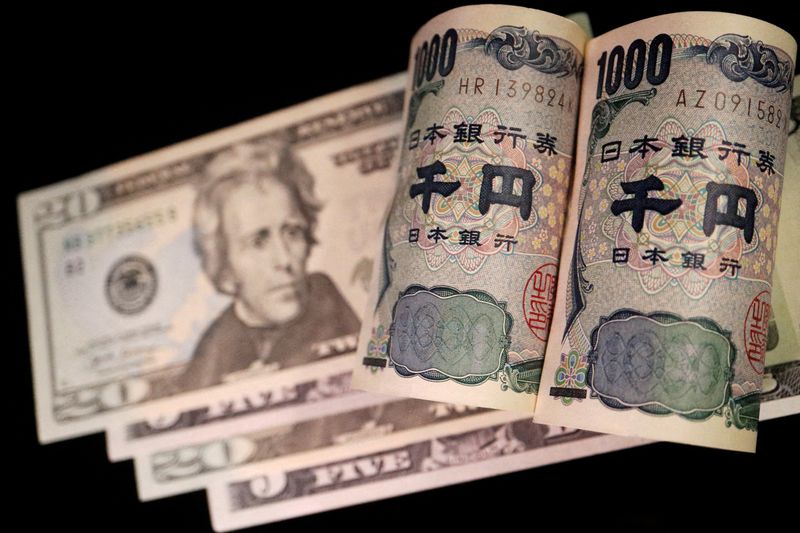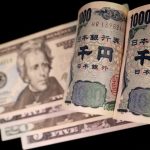(Reuters) -The dollar edged down but was still within striking distance of its 5-1/2-month high on Wednesday, keeping the yen rooted near 34-year lows after Federal Reserve officials reiterated interest rates are likely to stay higher for longer.
Top U.S. central bank officials including Fed Chair Jerome Powell backed away on Tuesday from providing any guidance on when interest rates may be cut, saying instead that monetary policy needs to be restrictive for longer.
Recent data suggested the U.S. economy was on a different track to that which the Fed had forecast, which led investors to cut their bets on future rate cuts. Risks of a broadening Middle East conflict added to the dollar’s short-term appeal as a safe-haven asset.
Analysts said they were still bullish on the greenback at the current levels.
“On any escalation of the Middle East crisis, we would expect the U.S. dollar to benefit from safe-haven flows,” said Jane Foley, senior forex strategist at Rabobank, confirming the target for the euro dollar at 1.05.
The U.S. and its allies planned fresh sanctions against Iran over its unprecedented attack on Israel, seeking to dissuade Israel from a major escalation as its war cabinet was set to meet again on Wednesday to decide a response.
BofA revised last week their call for Fed monetary easing to start in December this year or later, instead of June, and argued the greenback will strengthen even more if markets price out the Fed cuts for this year.
The dollar was slightly lower versus the euro at $1.0628 on Wednesday, not far from the five-and-half-month high of $1.06013 it touched on Tuesday.
Against a basket of currencies, the dollar was last at 106.22, just shy of the five-month peak of 106.51 touched on Tuesday. The index is up 4.8% for the year.
“As the market is still discounting almost two (Fed) cuts this year, the risk is for a hawkish repricing (of the Fed policy path) in the coming weeks,” said Olivier Korber, strategist at SG Markets.
“This could pressure EUR/USD below 1.05.”
Traders now anticipate 40 basis points of cuts in 2024, drastically lower than the 160 bps of easing they priced for at the start of the year.
European Central Bank policymakers continued to make the case for an interest rate cut in June on Tuesday as inflation remains on course to ease back to 2% by next year, even if the path for prices still proves bumpy.
YEN WORRIES
The yen last hovered just below 154.79 per dollar, its weakest level in 34 years.
Market participants raised the bar of a possible intervention by the Bank of Japan (BOJ) to prop up the Japanese currency, now mentioning the 155 level from previous 152, even if they believed the BOJ could step in at any time.
They flagged that the latest fall in the Japanese currency was in line with fundamentals, reflecting the pricing of Fed policy, and that authorities were analysing recent yen declines but even factors driving the moves.
“While the chorus of Japanese officials verbally intervening in JPY has increased with dollar/yen marching higher since U.S. CPI last week, rhetoric from officials has been more focused on speed of a move rather than levels themselves,” said Kieran Williams, head of Asia FX at InTouch Capital Markets.
Japan last intervened in the currency market in 2022, spending an estimated $60 billion to defend the yen.
Hedge funds have built up their biggest bet against the yen in 17 years, raising the prospect that when Japan’s embattled currency does rebound, the short-covering rally could be a powerful one.

The dollar’s strength has cast a shadow across the currency market, with emerging markets in Asia scrambling to stem the decline in their currencies, with the prospect of rate cuts this year in the region swiftly evaporating. [EMRG/FRX]
Bank of Korea Governor Rhee Chang-yong said the central bank was ready to deploy measures to calm the market, while Indonesia’s central bank is continuing to intervene in the foreign exchange market ahead of its policy meeting next week.
To read the full article, Click Here

